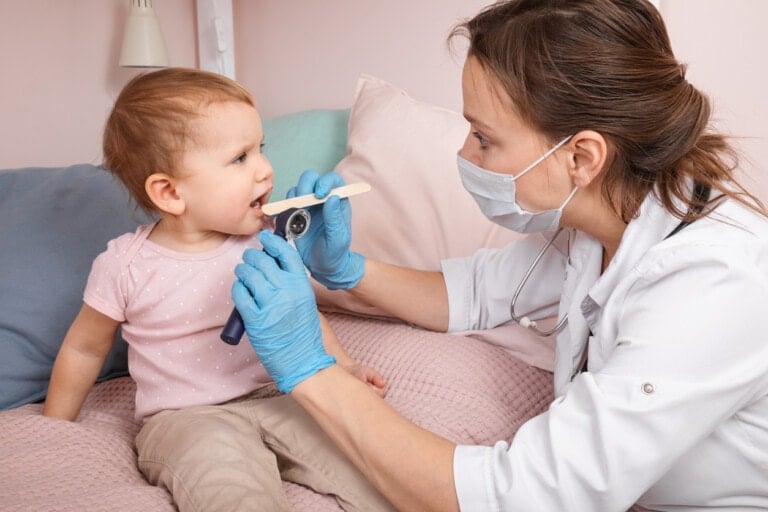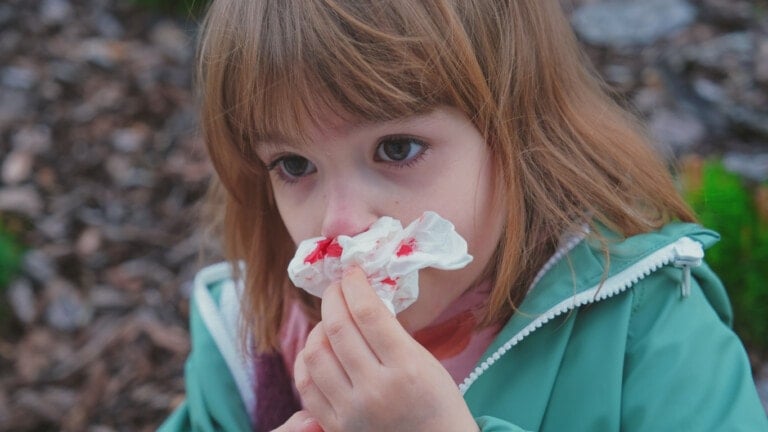If you have toddlers, and especially if they are in daycare, it can feel like they are sick more often than they are healthy. There is always a bug going around, and I consider it a good week if my toddler does not have a runny nose. These constant illnesses can be incredibly frustrating and sometimes debilitating, especially when we parents end up coming down with them! One culprit of these frequent illnesses is hand, foot, and mouth disease. Anyone can get it, but it is most common in children under five. And while cold and flu season typically refers to the cold, dry winter months, children can get sick anytime. Hand, foot, and mouth disease most often strikes in the summer and fall. Since it is so common in young children, you must know the facts about it.1,2
What is Hand, Foot, and Mouth Disease?
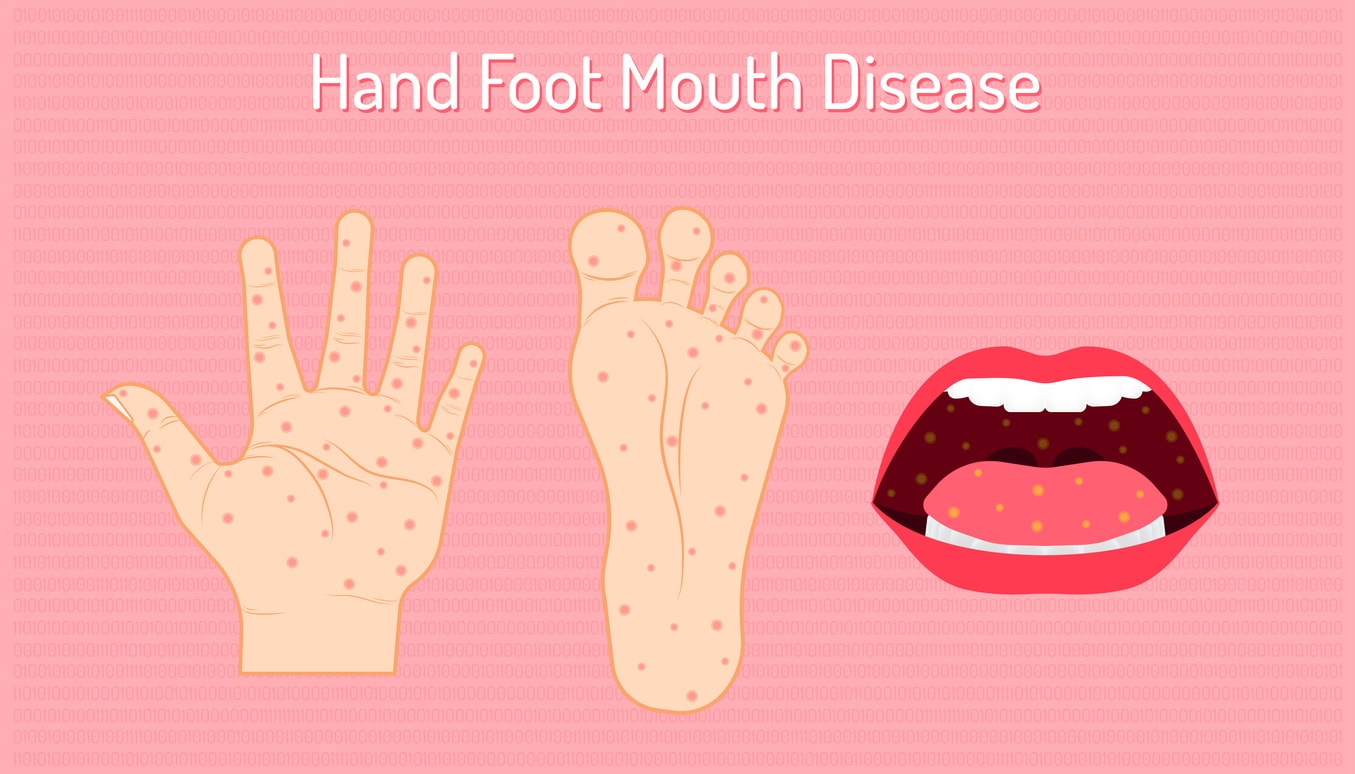
Hand, foot, and mouth disease (HFMD) is viral, but various viruses can cause it. Typically, an enterovirus such as coxsackievirus causes HFMD. Although sometimes confused for each other, hand, foot, and mouth disease is not the same as foot-and-mouth disease that animals sometimes get. HFMD cannot be given to or acquired from animals.2
When a person’s symptoms match the description, regardless of the specific viral cause, it would be diagnosed as hand, foot, and mouth disease.2
Symptoms of Hand, Foot, and Mouth Disease
At the start of the illness, symptoms may resemble a common cold with a runny nose, sore throat, headache, and fever.3
As the disease progresses, you may see symptoms more unique to hand, foot, and mouth disease. These include mouth sores and a rash on the palms of hands and the soles of the feet. The red spots in the mouth, hands, and feet are typically flat, not raised. The sores may eventually blister but typically do not burst. Sometimes, a rash in the diaper area can occur.4,5,6
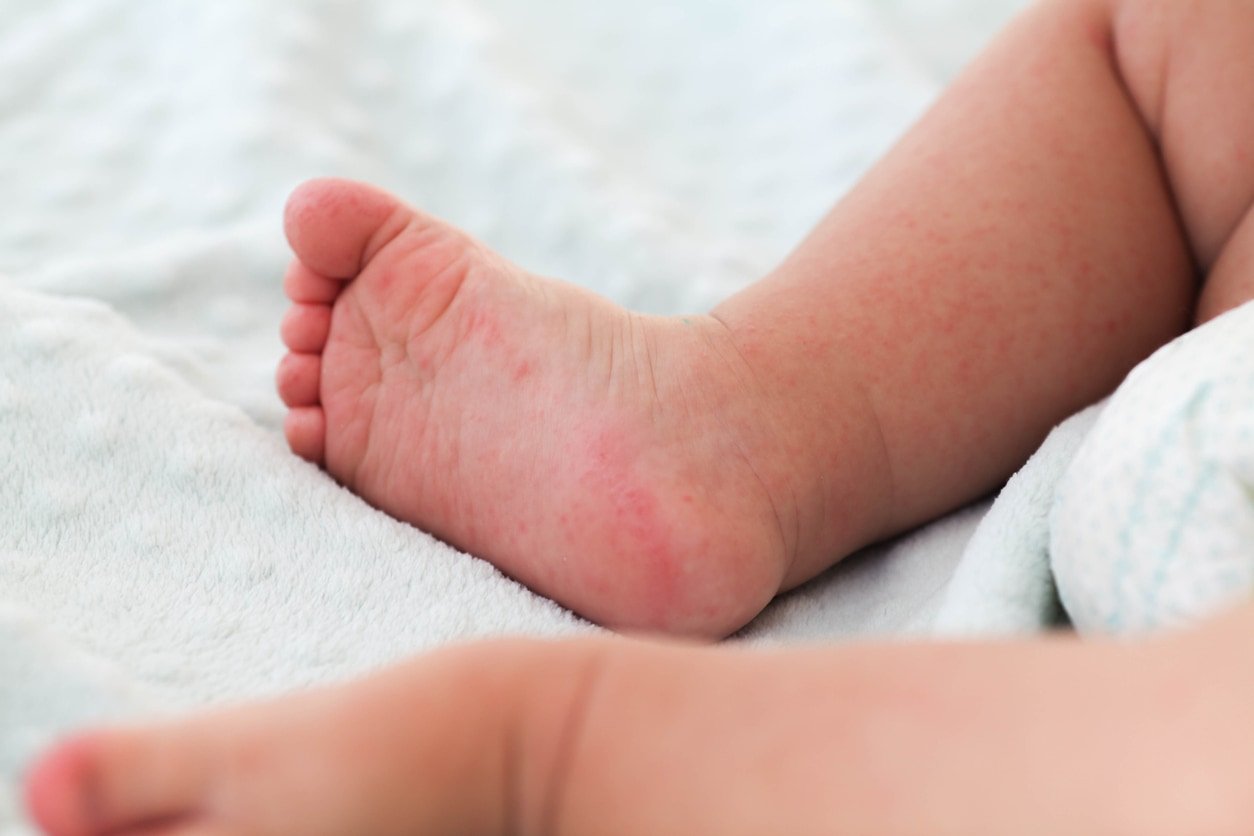
Getting a good look inside your child’s mouth can sometimes be challenging. Some signs that they may have painful sores in the mouth include not eating or drinking or only wanting to drink very cold liquids. You may also notice excessive drooling, which can mean swallowing is painful.4
How Long Does Hand, Foot, and Mouth Disease Last?
After exposure to the virus, it may take three to six days for the symptoms of HFMD to appear. This is called the incubation period. Symptoms can last between seven and 10 days, with two or three days of fever followed by up to a week of a rash. However, symptoms should not be at their peak for this long.6,7
The CDC recommends contacting your child’s pediatrician if their fever lasts more than three days or if their symptoms last longer than a week. They also recommend contacting a provider if your child is under six months old, has a weakened immune system, or refuses to drink.4
How Does It Spread?
Hand, foot, and mouth disease is spread through respiratory droplets. Anyone who encounters an infected person’s mucus or saliva, including drool, may become sick. It can also be transmitted through stool, such as when changing a diaper.2
The most important thing you can do to prevent the spread of HFMD is to wash your hands frequently. It is also essential to disinfect high-touch surfaces and toys. Avoid touching your eyes, nose, and mouth, and keep your distance from sick people.8
Treatments for Hand, Foot, and Mouth Disease
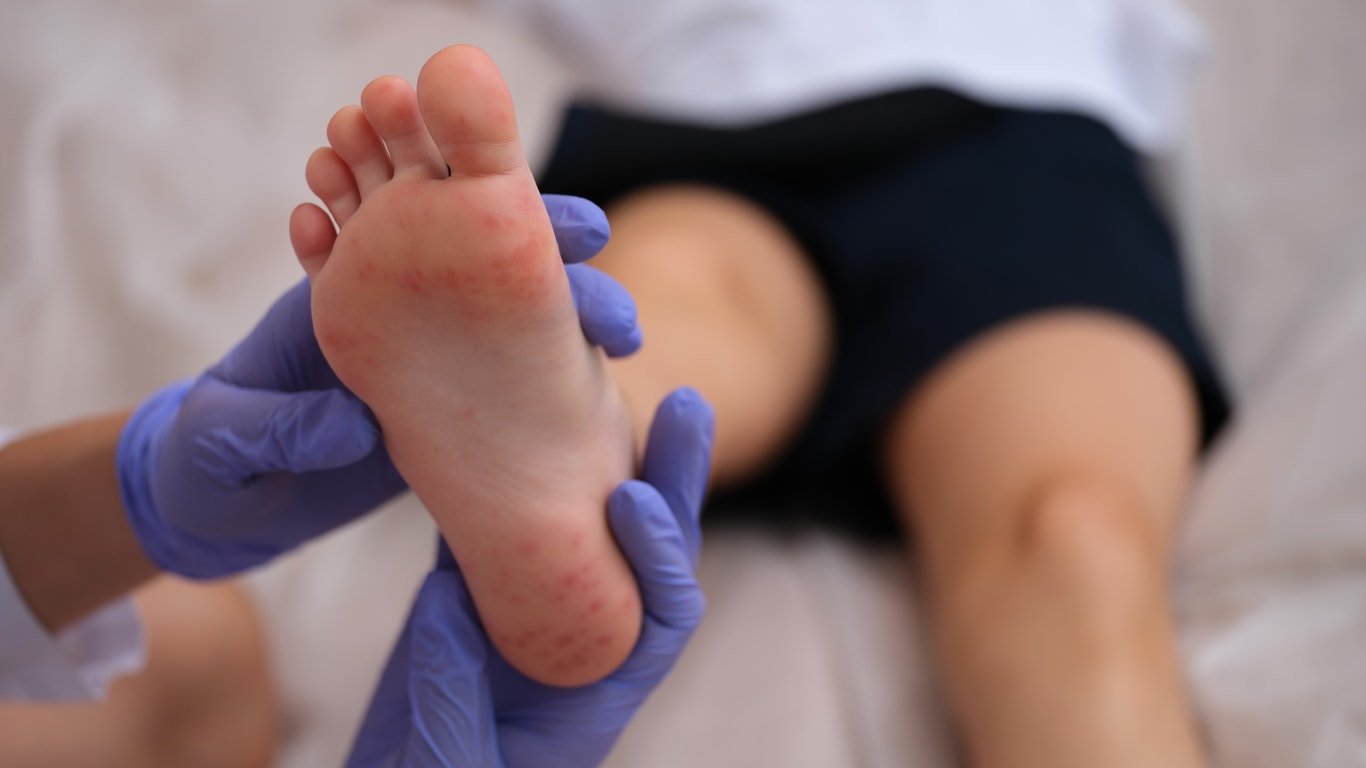
Because a virus causes hand, foot, and mouth disease, you typically have to let it run its course. There is no treatment to cure it faster, but there are interventions to help your child manage the symptoms.5,7
Fever
If your child is experiencing discomfort related to a fever, you can consider giving ibuprofen or acetaminophen to bring their temperature down. Refer to package instructions and your pediatrician for appropriate dosages. However, if the fever is less than 102 degrees Fahrenheit, it may be beneficial not to treat it, which helps to fight the infection.9
As with any fever, ensuring your child stays hydrated is vital. Offer lots of cold fluids.
Pain
Ibuprofen or acetaminophen can also help alleviate pain associated with the sores on the hands, feet, and mouth.
Oral Pain
A liquid antacid like Mylanta can help soothe stinging from oral blisters. You can apply it directly to the mouth using a cotton swab in children older than one. If the child is six or older, they can swish a teaspoon of antacid in their mouth, spit it out or swallow it. Alcohol-based mouthwashes should not be used as they may increase pain.
Focus on offering cold drinks and soft foods that will not further irritate the mouth. Hydration is the most important factor during this illness.
How HFMD Affects Your Kids
While no illness is fun, HFMD is often mild and short-lived. Rare hand, foot, and mouth disease complications include fingernail and toenail loss, viral meningitis, and brain swelling. Long-term effects are exceedingly rare. Most of the time, the worst case is that your child misses a few days of school.
If your child has a fever, is excessively drooling, or seems unable to keep up with normal school activities, you should keep them home. Otherwise, the CDC says they can continue to attend.2
No parent is excited about the news that their child has an illness or that something is circulating in their child’s classroom. In the case of hand, foot, and mouth disease, rest assured that it will almost always pass quickly with no long-term repercussions. Focus on symptom management at the peak of your child’s discomfort with HFMD. Encourage rest, hydration, and comfort; it will be over before you know it.






























